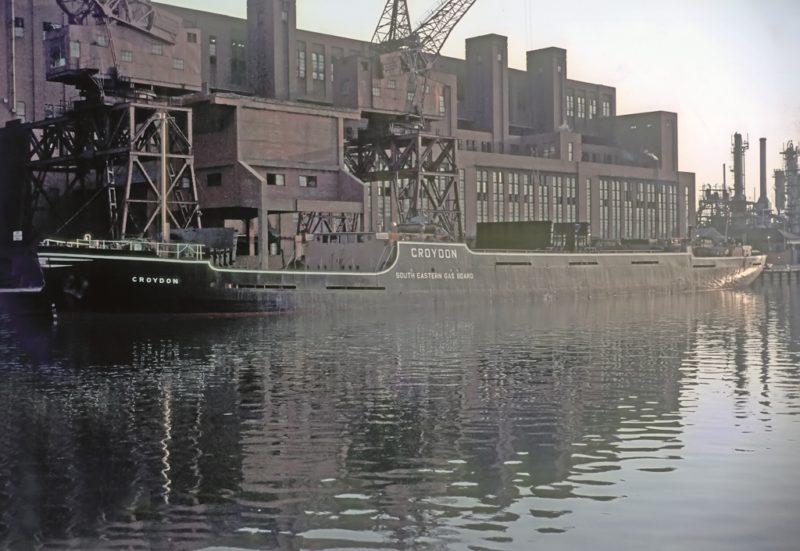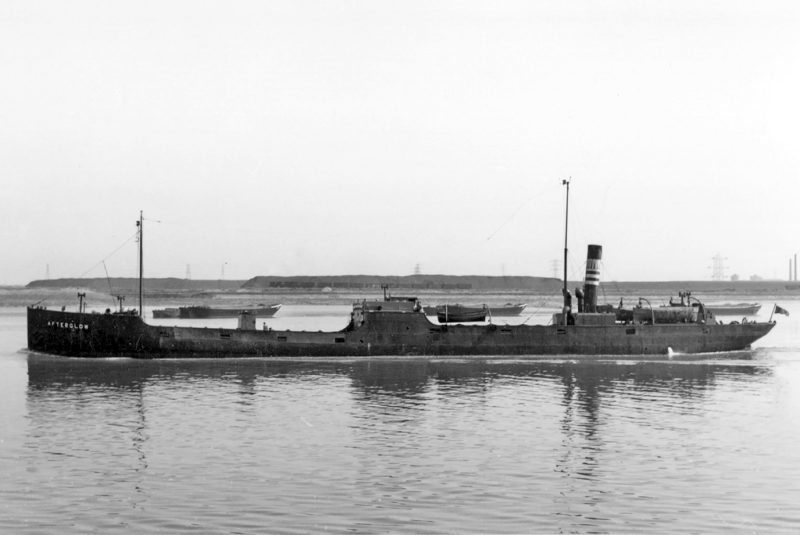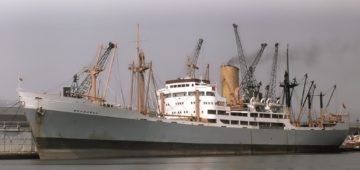The North Thames Gas Board and the South Eastern Gas Board

I have always had a deep knowledge of the immensity of the coal trade carried on from the Tyne and North East Coast ports to London and South Coast ports. My father was the Manager of Whitehill Point Staiths at North Shields from its opening on 22nd November 1954 to its closure at the end of 1974. One million tonnes of coal was sent away each year, usually to the Thames or the South Coast, but some was exported in larger tramps, and the conversation at the dinner table was always how many trimmers and teemers he had engaged that day for the day shift and for the night shift. This was usually six to a dozen of each depending on whether the ships being loaded were self-trimmers, easy trimmers or needed full trimming.
The word ‘teem’ is derived from an old Norse word meaning to pour down e.g. as in teeming rain, and the teemer directed the flow of coal from the flexible end of the spout with the aid of a rope, and the trimmers were equipped with large shovels to push the coal into the extremities of the hold. Loading coal at staiths is always a very dirty operation with clouds of coal dust generated on dry days, as well as the rumble and ‘screech’ of coal wagons and the heavy clattering noise of the operation of their modern ‘tippling’ machinery for steel wagons. The old wooden coal wagons had a trap door cut into their bottoms, which a nimble worker had to quickly unfasten as the wagon came to rest over the hole leading to the chute.


I was born in a house in South Shields in 1945 paid for by my maternal great grandfather, Capt. Henry Edwin Norman, William Cory Collier Commodore from 1910 to 1927, when he retired after his last command, Corbrook of 1910, was sold to Polish owners. He was born in 1863 as a Londoner within the Bow Belles area, his father was an Army farrier, who died after a kick from a horse, and thus young Henry served 42 years at sea on a worldwide seafaring career after his apprenticeship on windjammers. He had joined the collier Stelling in 1886 and then John McIntyre in 1890, and served in a long succession of colliers and was in command of the colliers Walker, Merthyr, Hawthorn and Hornsea, as well as Northumbria, Devereux and Ocean for Cory. He was in command of the latter ship when she was torpedoed in 1917 off Hartlepool. He always slept with the door to his cabin open, but the force of the explosion slammed the steel door firmly shut, and he had a narrow escape from being trapped, suffering shoulder and internal injuries in trying to force the door open. After convalescence at his home in Westoe Road, South Shields, he resumed as Cory Commodore at the end of the war. He died in 1936 aged 73 years and had received bravery and war medals for his war-time service.
Six hundred years of sending coal to London saw coal imports into London from U.K. ports at 458,000 tons per year in 1702/04, rising to 990,000 tons per year in 1732, and to several million tons per year in the 1850s. The sailing ship could only make eight voyages per year, whereas the pioneer steam collier John Bowes of 1851, built by Charles Palmer of Jarrow, could make a return voyage in under five days and carry more coal in a month than a trio of sailing brigs. She carried only 108 tons of water ballast on the return voyage in the fore peak and double bottom, whereas sailing ships carried much larger amounts of solid ballast in the bottom of the ship. This created the common feature of ‘ballast hills’ in North East Coast ports when it was discharged before the next coal cargo was loaded.
These staggering coal shipment totals culminated in the biggest annual export of coal from the Tyne of 22.5 million tons of coal in 1923, most of it to the big gas works and electricity power stations on the Thames. Beckton Gas Works was the biggest of its kind in the world, and at the time of nationalisation of the gas industry in 1948, supplied 119.12 million cubic feet of gas per day, to keep London warm in winter. Beckton continued in service until 1976 when North Sea gas had during the decade from 1965 supplied enough ‘clean’ gas to render the old gas works obsolete. The latter had also included the gas works of Bow Common, Brentford, Bromley, Fulham, Harrow and Stanmore, Kensal Green, Nine Elms, Shoreditch, Southall, Southend, Staines, and Stratford in the East End of London.
Subscribe today to read the full article!
Simply click below to subscribe and not only read the full article instantly, but gain unparalleled access to the specialist magazine for shipping enthusiasts.






Comments
Sorry, comments are closed for this item